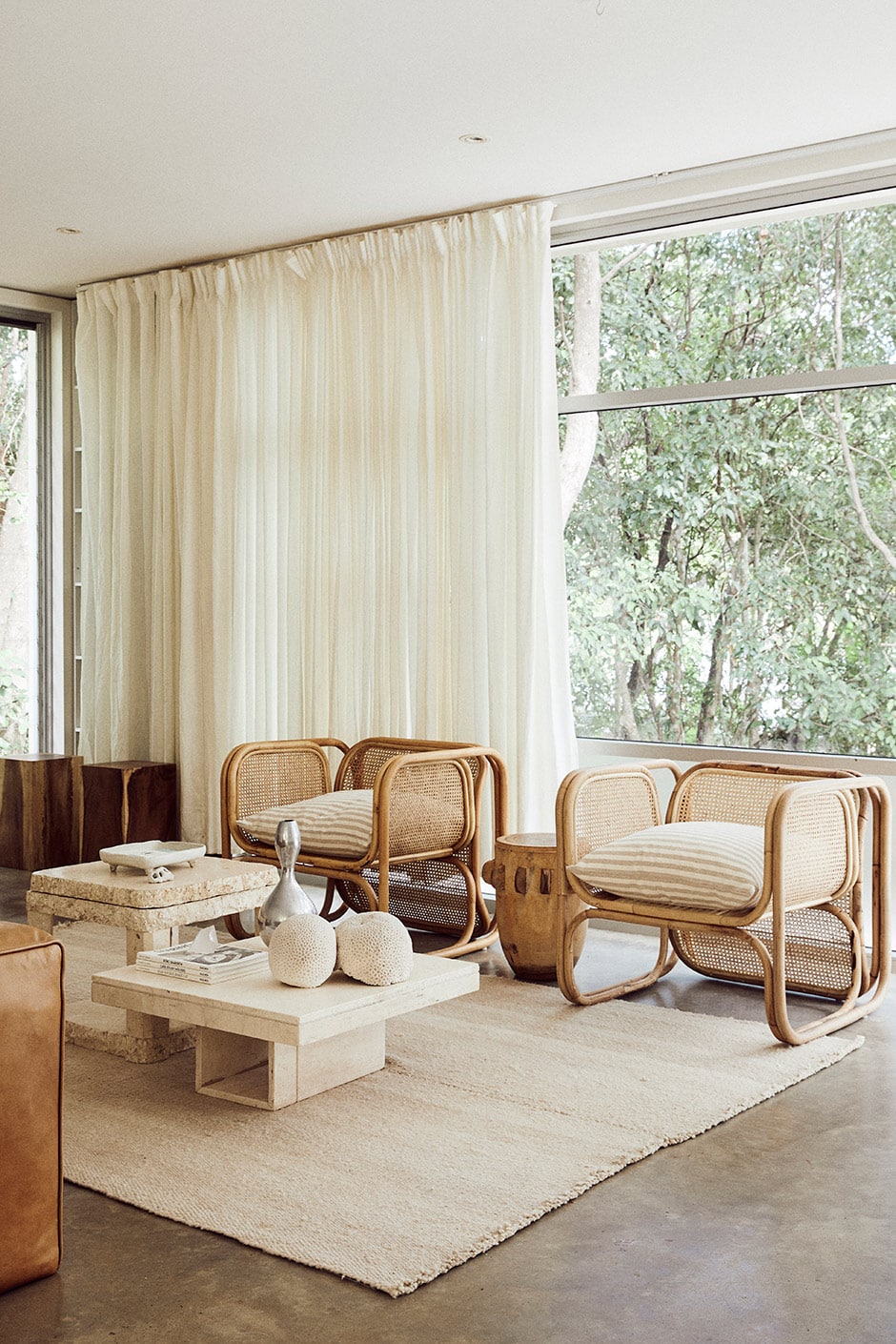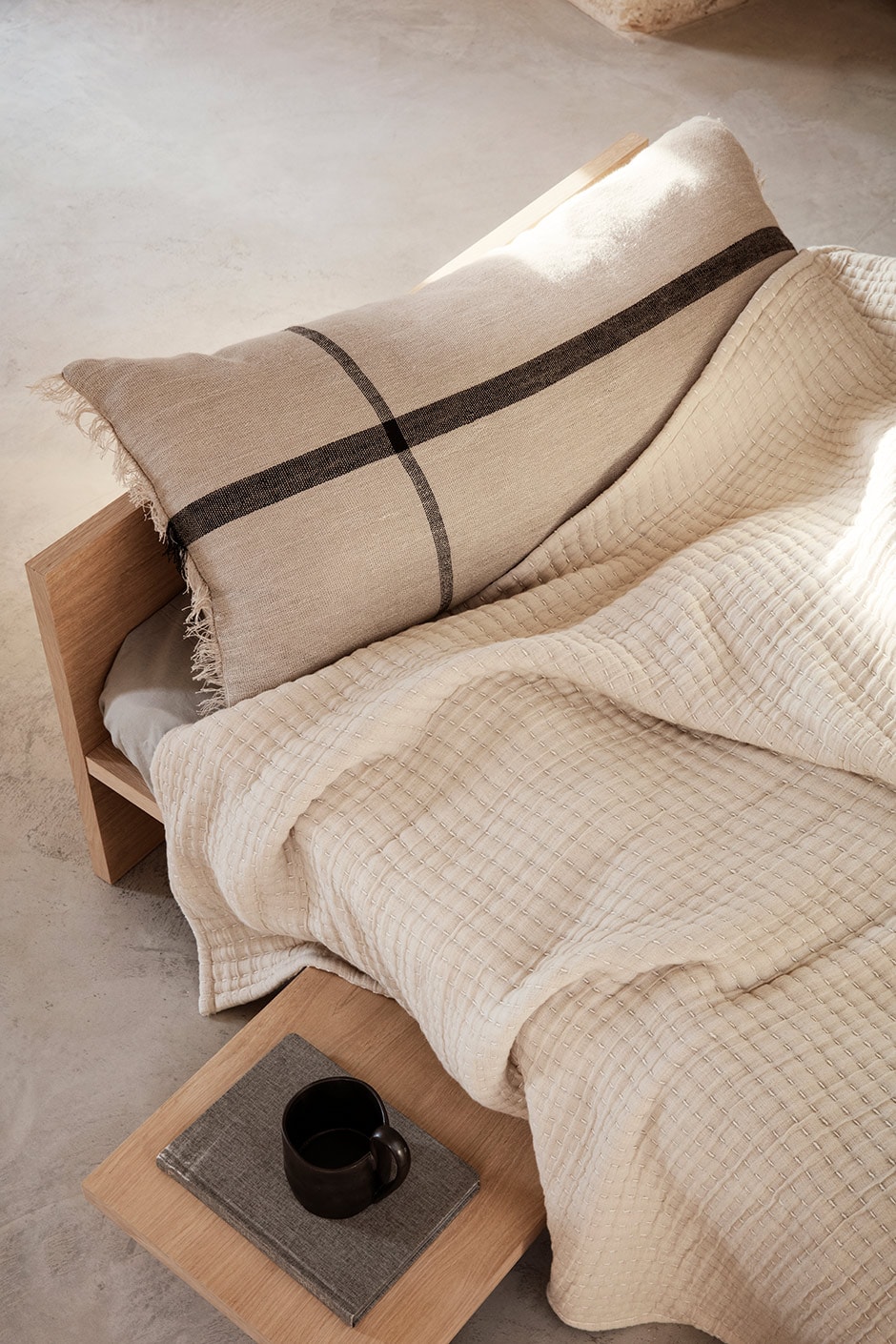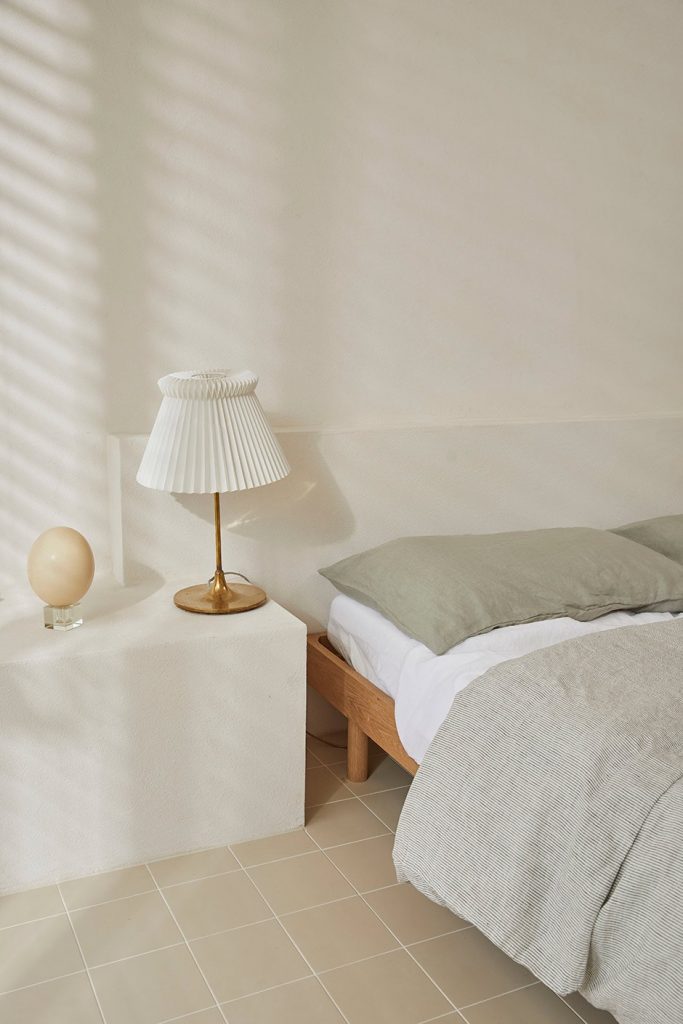Expert advice on how to wash and dry your finds so they’ll last you a lifetime.
In association with Fisher & Paykel.
Save, invest, buy less
Like falling back on fast fashion for your wardrobe, it’s easy to get sucked in by the quick-fix homeware cycle. However, when you step back a bit, you’ll find there’s something really enjoyable about the seemingly old-fashioned process of seeking out just the right pieces and saving up to buy them in order to craft an interior that’s pleasingly unique.
A big part of this approach is narrowing in on your forever style, and to do this, it’s useful to contemplate your ‘interior personality’. Knowing what you really love to live with will help inform your purchasing decisions so you’re not left paralysed by choice. Ask yourself questions such as: ‘Am I a layered neutrals person or do I have more fun when embracing pops of colour? Will natural forms make me feel calm in this space, or do I want high-tech pieces that set a modern mood? Am I a minimalist at heart or is more more for me?’ While choosing quality over quantity, you should also aim to answer the query: ‘Am I following a trend, or does this item
reflect my own taste?’

Thoughts that count
When considering colour, try to stick to a palette of four or five hues in each room. You could reference any number of sources for inspiration, such as a favourite artwork, the scenery outside, other interiors you’ve admired or, given ambience is equal to aesthetics when creating a welcoming home, you might like to put pen to paper and journal what you’d like your spaces to feel like.
When selecting materials, Working with what Mother Nature has to offer will improve the health of your home and reduce your impact on the environment. Man-made has long been lauded as convenient and affordable, but the inconvenient truth is that many of the industrialised ingredients and processes involved come at a high cost to the planet. And that’s before you’ve even brought things home.
Take synthetic textiles, for instance. Once in use and with regular washing, their plastic-based microfibres continue to poison us, our waterways and our food chain.
Four eco-friendly fabrics that are both beautiful and better for everyday use include linen, hemp, cotton and wool. Not all natural materials are equal, though, so do your research on their origins and the methods involved in their production. Commit to sourcing organic and ethically grown options, asking questions of the brands you’re keen to buy from. For lots of companies, sustainability is a journey, not a destination, and many are continually bettering their practices behind the scenes to ensure they tread more lightly on the Earth.
Responsibly buying only what you love and need and the best quality you can afford are just the first steps in the process of creating an enduring interior — central to it all is maintaining your finds. Turn the page for expert advice on how to do so.


Living.
Textile TLC
With all the time we’ve spent at home recently, our tea towels are getting more use than ever, our cushions are suffering from endless Netflix-and-snack sessions and our throws are in need of some major TLC. So we can enjoy them for longer, we asked the experts at Fisher & Paykel how to care for them like pros. Read on for five laundry tips we can all put to good use with their state-of-the-art appliances, such as the 12kg ActiveIntelligence™ Front Loader Washing Machine and 9kg Heat Pump Condensing Dryer pictured above, which you can stack or stand side by side for a complete fabric-care system.

1
Better bedding, everyone: Seasonal washing of the contents of your linen cupboard helps deter damp and dust mites. This smart-tech Fisher & Paykel washing machine has an Allergy cycle designed for asthma sufferers and those with skin sensitivities. The hot wash kills mites, two rinse cycles remove all traces of detergent, and the generous 12kg drum easily accommodates duvets.
2
Gently does it: Hands-free hand- washing lets you extend the life of treasured textiles and spend less time standing over the sink. Whether it’s silk pillowslips or heirloom embroidery, this Fisher & Paykel front loader’s Delicate wash cycle is ideal; its gentle action replicates manual handwashing while the water helps cushion delicate fabrics. Low-temperature drying using this Heat Pump Condensing Dryer is the ultimate finishing touch, and it also comes with a drying rack for items such as textiles, toys, shoes and accessories that could be damaged if they’re tumbled.
3
Like it like that: Mind your whites and darks, but pairing like fabrics (linen with linen, cotton with cotton) is the best way to ensure optimal textile care. The next time you have some winter woollies in your laundry basket, perk up some blankets and throws while you’re at it; this washing machine’s 14 wash cycles include a Woolmark-endorsed option that’s tailor-made for the job.
4
Clean & clear: With hygiene on our collective mind, opting for a hot wash cycle for ultra-dirty items such as dishcloths and towels gives them a good clean and you peace of mind. Fisher & Paykel front loaders all have cycles that reach 90°C, but do take note: fabrics tend to release more dye at hotter temperatures, so you’ll want to separate neutrals and brights when washing this way.
5
Double down: When was the last time you washed your cushion covers — or the down inners? Fisher & Paykel’s Bulky cycle is perfect for larger items you might have traditionally dry-cleaned. Balance your loads by washing several cushions at a time, but wash inners and covers separately to prevent colour run and shrinkage.
fisherpaykel.com



